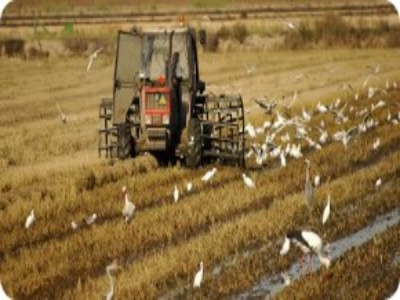Irrigated agricultural crops
Travellers
Irrigated agricultural crops
Recommended Seasons: WINTER
In Extremadura more than 200,000 hectares of land are dedicated to irrigated agriculture favoured by the extensive network of dams and channels in the Rio Guadiana basin and, to a lesser extent, in the Tajo basin.
From the birds' point of view the most attractive of the irrigated crops are maize and rice (with 25,000 hectares Extremadura is the second most important rice-growing region in Spain), especially in winter. Once these crops are harvested (between October and November), the birds take advantage of the spilt grain which remains in the stubble after the harvest. Furthermore, the rice fields which continue under water for most of the winter become an attractive but shallow wetland. In spite of these areas being areas used for intensive cultivation, they support large bird populations from a variety of species.
Among the birds associated with irrigated agriculture are the wintering populations of common cranes, black-tailed godwit, lesser black-backed gull, black-headed gull, glossy ibis, herons, cattle egret, squacco heron, little egrets, great egrets, white storks, common geese, pintail, shoveler and northern lapwing.
Among the waders, the numbers of curlew, black-winged stilt, redshank, spotted redshank, golden plover, common snipe and ruff are significant.
Amongst the birds of prey, the populations of marsh harrier and hen harrier, which tend to make their roosts in the rice fields are worthy of mention and theblack-winged kite, buzzard, black kite, merlin and short-eared owl.
Some SPA's are designated exclusively for the protection of birds which inhabit irrigated agricultural areas such as 'Arrozales de Palazuelo' (Pazuelo Ricefielleds) and 'Guadalperales','Vegas del Ruecas' (Ruecas water-meadows), 'Cubila and Moheda Alta' and 'Llanos de Zorita and Embalse de Sierra Brava (Sierra Alta Reservoirs)'.


